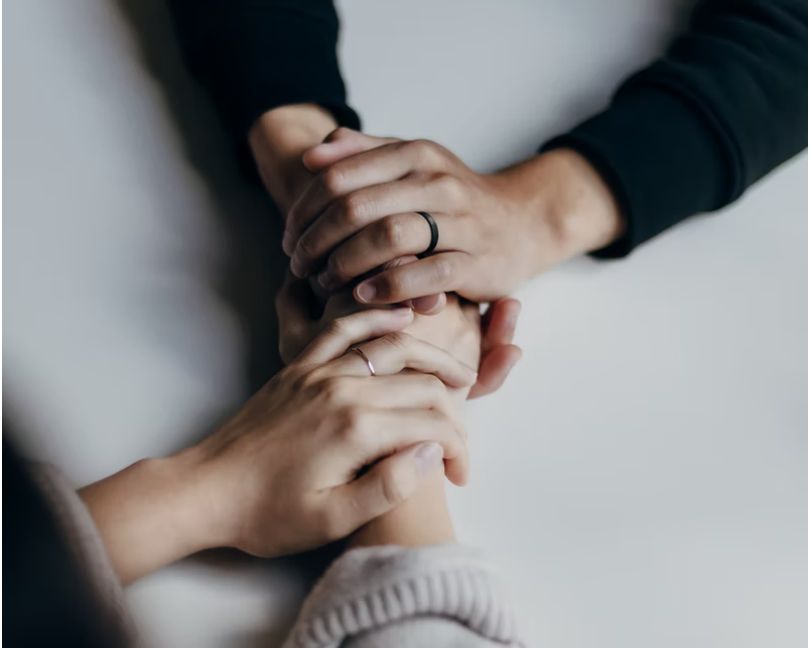The leaves are changing color, the air has shifted cooler and a buzz of anxious energy is lined up outside the classroom door. Teachers smile — with their eyes, behind their masks — to welcome a new group of students back to school.
During a pandemic.
Again.
What we once called “unprecedented” is now “a new normal.” Teachers are faced again with the challenge of nurturing young minds with compassion, enthusiasm and patience while shouldering the weight of a global crisis. Moreover, teachers are challenged to build a sense of community in the classroom amid these circumstances.
What can teachers do to maintain this balance of learning and well-being for their students? How can they also manage their own stress and well-being? As researchers in the field of social and emotional learning, we’ve curated several evidence-based solutions and strategies.
Social and emotional learning
Increased stress is part and parcel of a global pandemic, but learning — and learning loss recovery — can’t happen when the brain is under stress and in fight-or-flight mode. Helping students manage emotions and develop healthy relationships in a safe, supported environment is doubly important in the face of children and teens’ mental health challenges wrought by the pandemic.
In a large-scale review of 213 SEL programs for K-12 students, Loyola University Chicago’s Joe Durlak and his colleagues found that students who participated in SEL programs, compared with those who didn’t, not only improved in their social and emotional skills, attitudes and behaviors, but they also had an 11% gain in their academics.
That and an abundance of other scientific evidence support the benefits of SEL and its front-and-center importance in classrooms.
Teachers can support both their students’ and their own social and emotional well-being in several ways.
Focus on relationships
Creating a positive classroom context — one centered on caring and trusting relationships between teachers and students and among students — is the first step for integrating SEL into classrooms. Students grow and thrive when they feel that their teacher cares about them, believes in them and listens to them.
Some simple strategies to foster positive teacher-student relationships include:
- Continually update what you know about your students. Try a “Who am I?” activity or ask students to list their favorite books, activities, food or memories in a student inventory that you can keep and reference to help connect with students throughout the year.
- Greet students at the door. Teachers who connect with students before class by name or with a handshake, fist bump or nod — coupled with positive reminders to help students who may “struggle with disruptive behavior — generate greater student engagement in learning and fewer class disruptions.
Explicitly teach SEL competencies
- Help students identify emotions. Tools such as the Edsby Social and Emotional Check-Ins let students share with teachers what they’re feeling and why, helping teachers gauge whether they’re ready to learn or if they need additional support. The tool also provides students and teachers with emotion regulation strategies to try.
- Incorporate SEL programs. Well-implemented and evidence-based programs can help support students’ social and emotional development and academic success. A program guide from the Collaborative for Academic, Social, and Emotional Learning, or CASEL, provides research-based guidance for selecting the SEL program that can address your classroom or school’s unique needs.
- Try SEL standalone strategies. SEL Kernels — games, routines, storytelling and more developed by Harvard University’s EASEL Lab for K-6 students — are designed to foster social and emotional competencies.
Addressing teachers’ well-being
The ever-changing pandemic environment has led to an outsized roster of demands on and expectations of teachers — with 40% in one study saying they’re more likely to leave the profession than before the pandemic. Tools for teachers include:
- Practice self-care. It’s hard to attend to the well-being of students if teachers themselves aren’t attending to their own. Strategies include establishing boundaries, ensuring down time and advocating for their own wellness needs with administrators.
- Insist on professional SEL support. Teachers who feel supported professionally by the district, principals or colleagues are less likely to desire leaving the teaching profession.
- Seek supportive relationships. When teachers have caring and close relationships, both with their students and their colleagues, they exhibit better buoyancy — the capacity to navigate everyday challenges — and feel more confidence and wellness at work.
- Explore online resources. The Committee for Children, Second Step, Transforming Education and Panorama Toolkit are among tools to support teachers’ well-being and social and emotional competencies.
As we all work together to navigate a new school year, let’s prioritize the well-being of both students and teachers — and allow space for everyone to first be well — to form the foundation for true learning to occur.
Kim Schonert-Reichl, Ph.D., is an expert in social and emotional learning; the NoVo Foundation endowed chair in social and emotional learning in the psychology department at the University of Illinois at Chicago; and a board member of the Collaborative for Academic, Social, and Emotional Learning.
Jenna Whitehead, Ph.D., received her doctorate in Human Development, Learning, and Culture at the University of British Columbia.
M. Jennifer Kitil, Ph.D., is a research associate in social and emotional learning at the University of British Columbia’s Human Early Learning Partnership.
________________________________
Like this article? Sign up for our EdTech news briefing to get news like this in your inbox, or check out all of SmartBrief’s education newsletters, covering career and technical education, educational leadership, math education and more.
